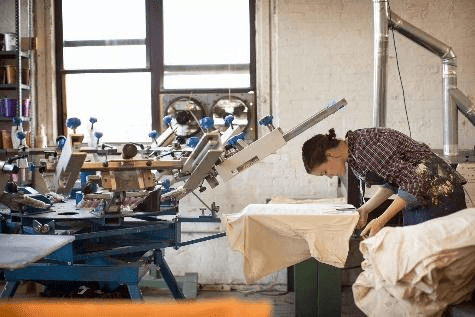Eco-printing on fabric creates organic patterns using plant parts. Print clarity and vibrancy are influenced by factors like fabric and leaf quality, contact duration, and mordant type. Consistent results can be challenging due to inherent variability.
Eco-printing, or botanical printing, is a sustainable method to design fabric using organic patterns from plants like flowers, leaves, stems, and bark. It does not always utilize natural dyes. The process involves carefully bundling and binding plant parts to mordanted fabric, followed by steaming to achieve a lovely natural texture.
History
The eco-printing technique was first reported by Australian artist India Flint. While pregnant, Flint noticed that eggs left by a chicken in a nest made of dried eucalyptus leaves had imprinted with leaf patterns after rainfall. Intrigued, she decided to experiment with using this method for printing on cloth. Flint is credited with reviving and popularizing eco-printing and presented her findings at the White Nights Textile Symposium in St. Petersburg, Russia in 1999. Limited historical records of eco-printing exist prior to Flint’s work.
Methods of eco printing textiles
Two common eco-printing methods are binding and steaming, and hammering or pounding. Binding and steaming involves enclosing plant parts between fabric layers and using steam to create prints. In hammering or pounding, plant materials are initially hammered with a soft mallet on fabric before being wrapped and steamed.
Factors influencing the variables of eco printing
The unique beauty of this technique lies in the unpredictable outcome it produces, making each print one-of-a-kind. Additionally, eco-printing the fabric with moringa leaves has been reported to enhance its anti-bacterial properties. This method has gained significant attention due to concerns about the environment and global warming. It can easily be done at home and only takes a few hours to complete in batches. However, it is important to note that the results may not always be clear or visible. Factors such as fabric and plant material quality, contact duration, mordant type, and weather conditions can all influence the outcome.
- The fabric’s quality affects eco-prints. Impurities like oils and waxes in natural fibers hinder pigment absorption. Well-scoured fabrics give better results. Different fiber types (protein or cellulosic) respond differently to eco-printing, affecting the final impression.
- The quality of leaves in eco-printing is essential as the pigments vary based on weather, climate, and freshness. Warmer, sunnier conditions with cool nights produce more vibrant pigments, resulting in brighter reds, purples, and crimsons. Temperature and humidity can significantly impact leaf pigments and the printing process. Seasonal changes affect which flora will yield better impressions at specific times. Additionally, the side of the leaf exposed to the sun produces different results than the shaded side, showcasing the technique’s natural variability. This uniqueness celebrates the harmony between nature and artistry in each eco-print.

- The duration of contact between plant material and fabric is crucial in eco-printing. While the process can be done in a few hours, longer contact time enhances print clarity and intensity. Insufficient time may lead to pale or incomplete impressions.
- Mordanting is an essential step in eco-printing to ensure long-lasting colours. Alum and iron are popular mordants for their eco-friendly qualities. Results differ significantly with iron mordant shifting colours darker and alum preserving natural hues, creating lighter and delicate impressions. Choosing the right mordant is crucial for desired outcomes in eco-printing.
Eco-printing offers an eco-friendly solution for the fashion industry’s environmental concerns. However, the lack of standardized processes and variability in outcomes pose challenges for practitioners seeking consistent results. To address this, a suitable framework can guide practitioners by addressing key variables like weather conditions, fabric characteristics, mordant methods, and plant material choice, ensuring consistent and desirable results.

